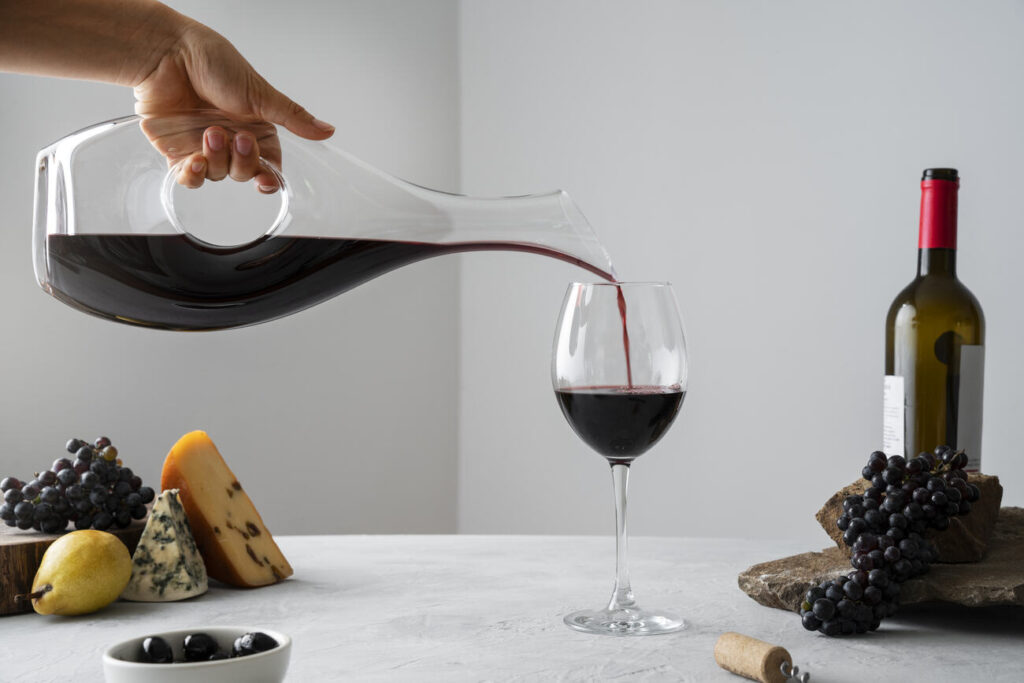Do winery owners know if their winery is actually performing well? Possibly not. There is a good chance they have a general sense of how their business is doing, but do they know how they are doing compared to their peers or the standard you would expect from a winery?
Innovint’s recent outreach to its customers, highlighted in their insightful article on the Healthy Wine Business Framework, underscores the importance of benchmarking in the wine industry; understanding how your winery measures up against others is crucial for long-term success. Benchmarking provides a clear framework for assessing your business’s performance and identifying areas for improvement.
The Importance of Benchmarking
Benchmarking allows wineries to evaluate their performance in various aspects, such as production efficiency, sales, and financial health. By comparing your winery’s metrics with industry standards or leading competitors, you can better understand where you stand and where there is room for improvement. This process not only helps in identifying best practices but also in setting realistic goals and strategies for growth.
Staying ahead of the curve is essential in an industry as dynamic as winemaking. Benchmarking provides several critical benefits:
- Performance Comparison: It offers an objective way to compare your winery’s performance against peers, helping you understand your relative strengths and weaknesses.
- Goal Setting: By understanding your current situation, you can set more realistic and achievable goals, aligning your strategies with industry standards.
- Best Practices: Benchmarking highlights best practices within the industry, providing a roadmap for improvement.
- Operational Efficiency: Identifying areas where your winery underperforms can lead to operational changes that improve efficiency and reduce costs.
- Strategic Planning: Regular benchmarking helps in strategic planning, ensuring that your business remains competitive and can adapt to changing market conditions.

Financial Health KPIs
Key Performance Indicators (KPIs) are essential metrics that help measure your winery’s financial health. Here are some crucial KPIs to consider:
- FOB Gross Margin – The Free on Board (FOB) Gross Margin measures the profitability of wines sold through distribution channels. It’s calculated as the difference between the selling price to distributors and the cost of goods sold, expressed as a percentage of the selling price. A high FOB Gross Margin indicates efficient production and strong pricing power in wholesale markets. Wineries should aim for a % above 40%, with those doing a great job achieving above 50%. How to Improve? Focus on reducing production costs through better vineyard management and more efficient winemaking processes. Negotiate better terms with suppliers and optimize your pricing strategy.
- DTC Gross Margin – Direct-to-Consumer (DTC) Gross Margin focuses on the profitability of wines sold directly to consumers through tasting rooms, wine clubs, or online sales. It’s calculated similarly to FOB Gross Margin but typically yields higher margins due to the absence of intermediary costs. Wineries should aim for a % above 60%, with those doing a great job achieving above 70%. How to Improve? Enhance customer experience in tasting rooms, invest in robust online sales platforms, and create compelling wine club offers—Personalize marketing efforts to build stronger customer relationships and loyalty.
- Blended Gross Margin—This KPI combines the FOB and DTC gross margins, providing an overall view of the winery’s profitability across all sales channels. It offers a comprehensive picture of how well your pricing and cost management strategies are performing collectively. Wineries should aim for a percentage above 50%, with those doing a great job achieving above 60%. How to Improve: Balance your sales strategy between DTC and distribution to maximize overall margins. Regularly review and adjust pricing and cost structures to maintain a healthy blended margin.
- EBITDA Percentage – Earnings Before Interest, Taxes, Depreciation, and Amortization (EBITDA) as a percentage of revenue is a critical measure of operational efficiency and profitability. It provides insight into the winery’s ability to generate profit before accounting for financial and accounting decisions. Our goal here is positive, but those doing okay are hitting 20% or better. How to Improve? Streamline operations to reduce unnecessary expenses, improve productivity, and focus on high-margin products. Regularly review financial processes to identify areas for cost savings.
- Operating Expense Ratio – This ratio compares operating expenses to total revenue, helping to assess how efficiently the business is being run. A lower ratio indicates better efficiency and cost management. How to Improve? Analyze operational processes to identify inefficiencies and areas for cost reduction. Implement better budgeting and financial planning practices to control expenses.
- The debt-to-equity Ratio measures the winery’s financial leverage, indicating the balance between debt financing and equity financing. A lower ratio suggests a more stable financial structure with less reliance on debt. How to Improve: Focus on generating strong cash flows to reduce reliance on debt. Consider equity financing options to strengthen the balance sheet without increasing financial risk.
- Cash Flow from Operations – This KPI tracks the cash generated by the winery’s core business operations, providing insight into the business’s liquidity and operational efficiency. Positive cash flow is crucial for sustaining operations and funding growth. How to Improve? Enhance cash flow management by optimizing inventory levels, speeding up receivables, and negotiating favorable terms with suppliers. Monitor cash flow regularly to ensure sufficient liquidity.

Resources for Effective Benchmarking
To help wineries embark on their benchmarking journey, we have compiled a list of valuable resources:
- SVB Wine Reports: This bank has been the leader in sharing market insights with the world for many years. Rob McMillan and the team’s work set the tone for discussion each year, and their surveys are referenced at all conferences and events throughout the year.
- Wine Business Monthly is a leading publication in the wine industry. It offers a wealth of articles, reports, and resources on industry trends and benchmarking practices. It is a go-to source for staying updated on the latest developments in the wine business.
- Innovint’s Healthy Wine Business Framework: Innovint’s article provides a comprehensive overview of creating a healthy business framework, emphasizing the importance of benchmarking. It is a must-read for wineries looking to improve their business practices.
- Wine Analytics Report: This report provides in-depth analysis and insights into market trends, consumer preferences, and financial benchmarks. It is a valuable tool for wineries seeking detailed industry data. (Subscription required)
- Sovos ShipCompliant: This resource offers compliance and tax solutions for the wine industry as well as valuable market data and benchmarking reports. It helps wineries navigate regulatory challenges while monitoring their financial performance.
By leveraging these resources and focusing on critical financial health KPIs, wineries can better understand their position in the industry, identify growth opportunities, and implement strategies for sustainable success.
Benchmarking is a vital tool for wineries aiming to thrive in a competitive market. By regularly assessing your business against industry standards and focusing on critical financial health KPIs, you can make informed decisions that drive growth and profitability. Utilize the resources provided to enhance your benchmarking efforts and ensure your winery’s long-term success.



